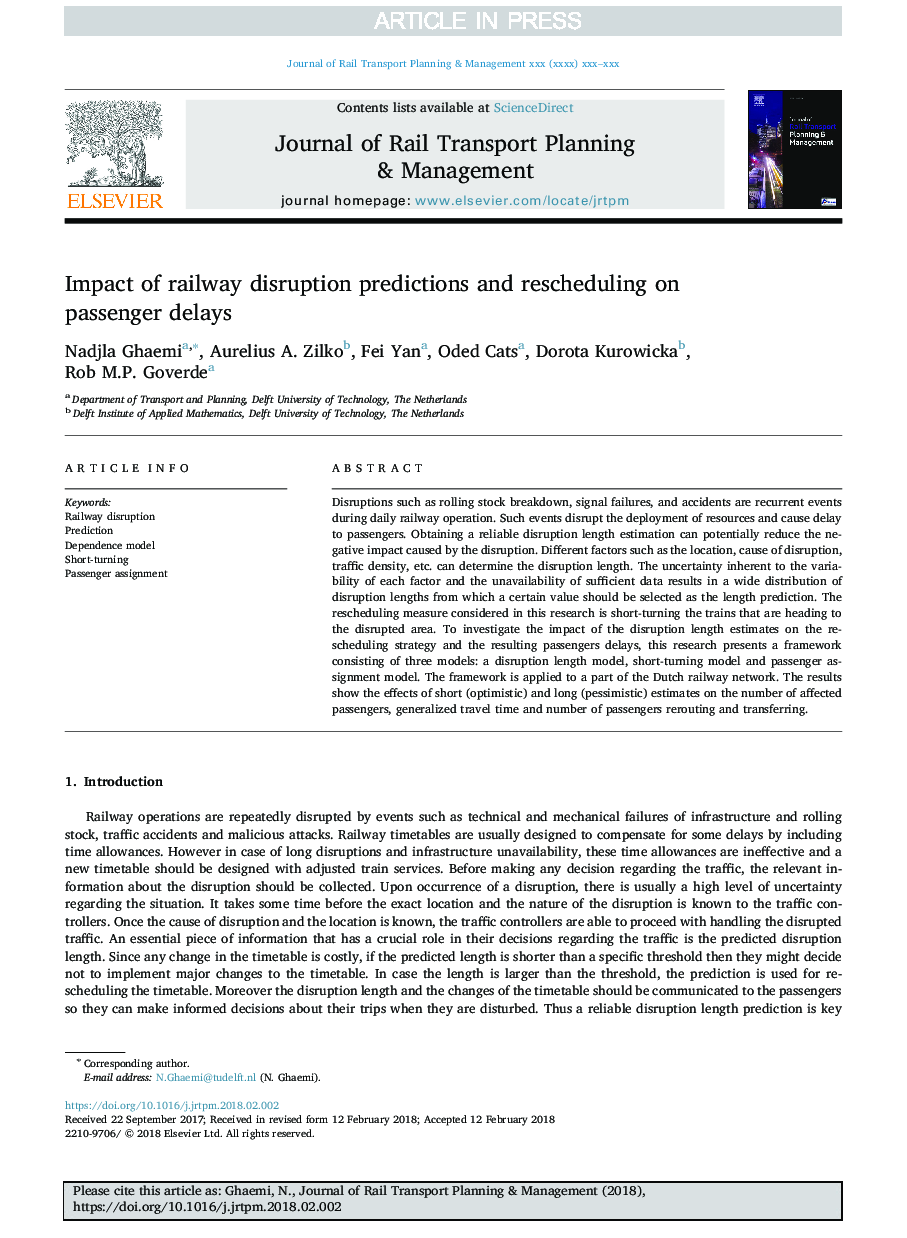| Article ID | Journal | Published Year | Pages | File Type |
|---|---|---|---|---|
| 8953497 | Journal of Rail Transport Planning & Management | 2018 | 20 Pages |
Abstract
Disruptions such as rolling stock breakdown, signal failures, and accidents are recurrent events during daily railway operation. Such events disrupt the deployment of resources and cause delay to passengers. Obtaining a reliable disruption length estimation can potentially reduce the negative impact caused by the disruption. Different factors such as the location, cause of disruption, traffic density, etc. can determine the disruption length. The uncertainty inherent to the variability of each factor and the unavailability of sufficient data results in a wide distribution of disruption lengths from which a certain value should be selected as the length prediction. The rescheduling measure considered in this research is short-turning the trains that are heading to the disrupted area. To investigate the impact of the disruption length estimates on the rescheduling strategy and the resulting passengers delays, this research presents a framework consisting of three models: a disruption length model, short-turning model and passenger assignment model. The framework is applied to a part of the Dutch railway network. The results show the effects of short (optimistic) and long (pessimistic) estimates on the number of affected passengers, generalized travel time and number of passengers rerouting and transferring.
Related Topics
Physical Sciences and Engineering
Computer Science
Computer Science Applications
Authors
Nadjla Ghaemi, Aurelius A. Zilko, Fei Yan, Oded Cats, Dorota Kurowicka, Rob M.P. Goverde,
